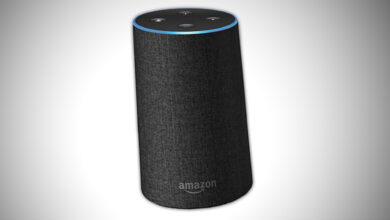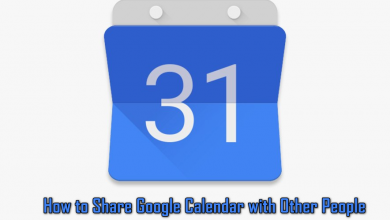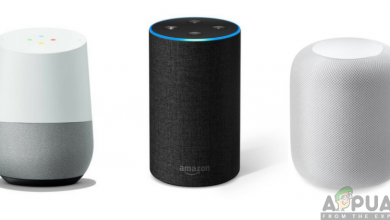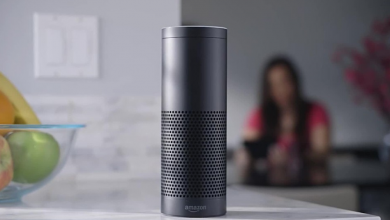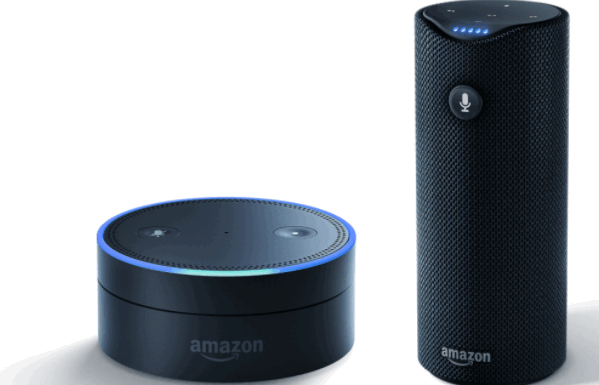Is Alexa not Responding? Try These Fixes
An Alexa app or device will not respond if there are issues with the network or if there is a problem with the device’s firmware. Try resetting the router or the Alexa device. This will clear out any network or cache issues.
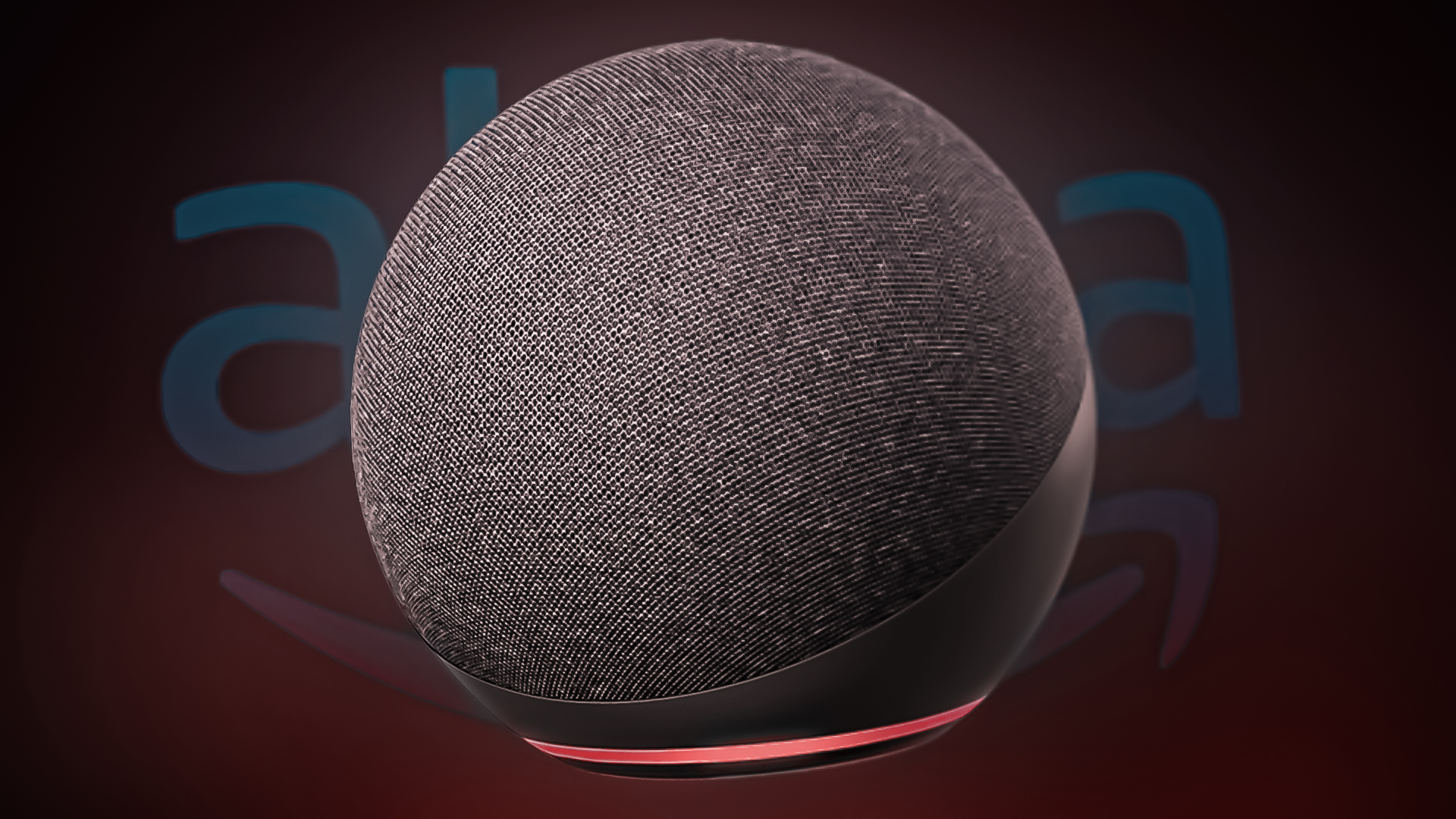
Before attempting the methods discussed below, it is important to check if the Amazon servers are up and running.
1. Re-enable the Microphone of the Alexa Device
Your Alexa device will fail to respond to commands if its audio modules are in an error state. This can be resolved by disabling and re-enabling the device’s microphone, which will effectively refresh the audio modules.
- Locate the Mute button on your Alexa device (e.g., an Echo) and press the Mute button to mute the microphone.
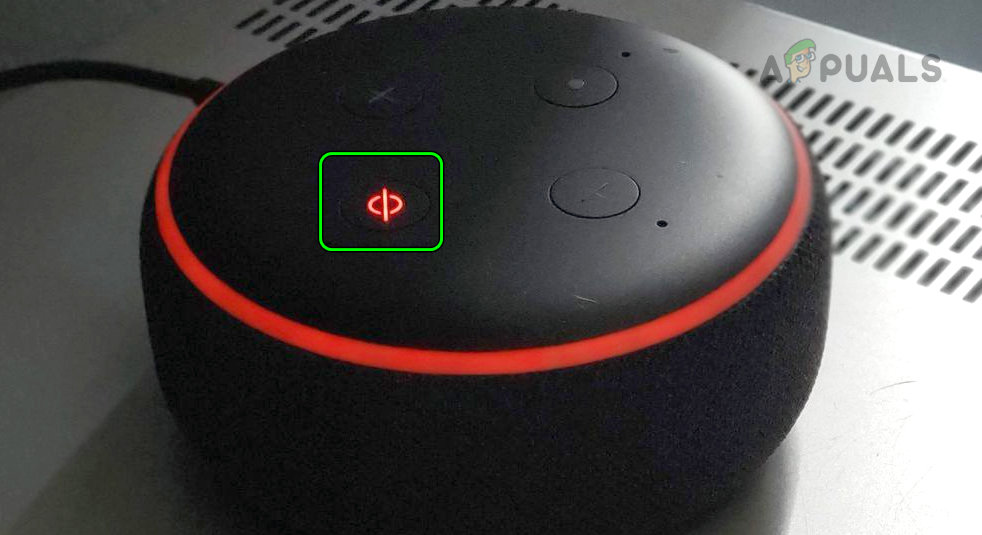
Mute the Amazon Echo Device - Wait for a minute and enable the Microphone. Check if the Alexa device is responding.
- If that fails, ensure the device’s microphone is clean. Accumulated dust and debris may have decreased its sensitivity, causing the device to fail in hearing you.
- Once completed, verify whether Alexa is responding to commands.
2. Enable and Disable the Phone’s Airplane Mode
You will face a ‘not responding’ message on the Alexa app if your phone’s communication modules are in an error state and as a result, commands from the app will not be reaching the device. In such a case, enabling and disabling the iPhone’s airplane mode will resolve the issue as the communication modules will be reinitiated.
To do so on an iPhone, follow these steps:
- Launch the iPhone Settings and enable Airplane Mode.
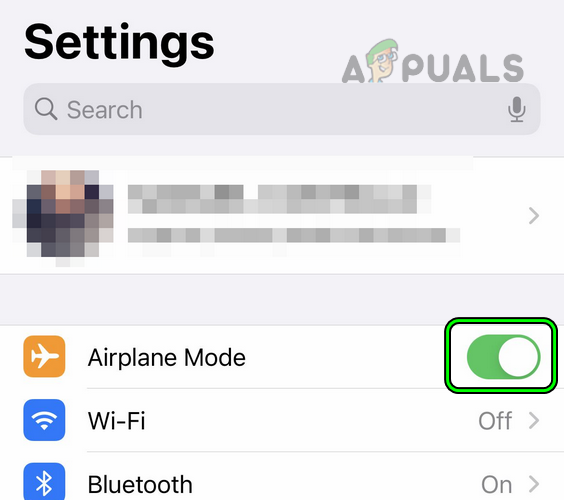
Enable Airplane Mode on the iPhone - Wait for a minute and disable the Airplane Mode. Then, check if Alexa is responding properly.
- If not and the issue is occurring with a device (such as a Sensibo unit) that sends an IR signal to Alexa, then make sure that the device is in the line of sight with the Alexa device and retry Alex.
- If the issue persists, check if Alexa responds to any of the following phrases:
Alexa, Go Home Alexa, Cancel Alexa, Stop Music (if Alexa is not stopping music)
3. Restart Alexa and Connected Devices
A quick restart can solve many communication glitches and reinitialize a variety of different modules. Try restarting all devices and see if that fixes the problem.
- Firstly, check whether restarting the problematic device (such as a bulb, AC, etc.) solves the problem.
- If not, power off the Alexa device, wait for a minute, and switch on the device. Verify if Alexa has started to respond.
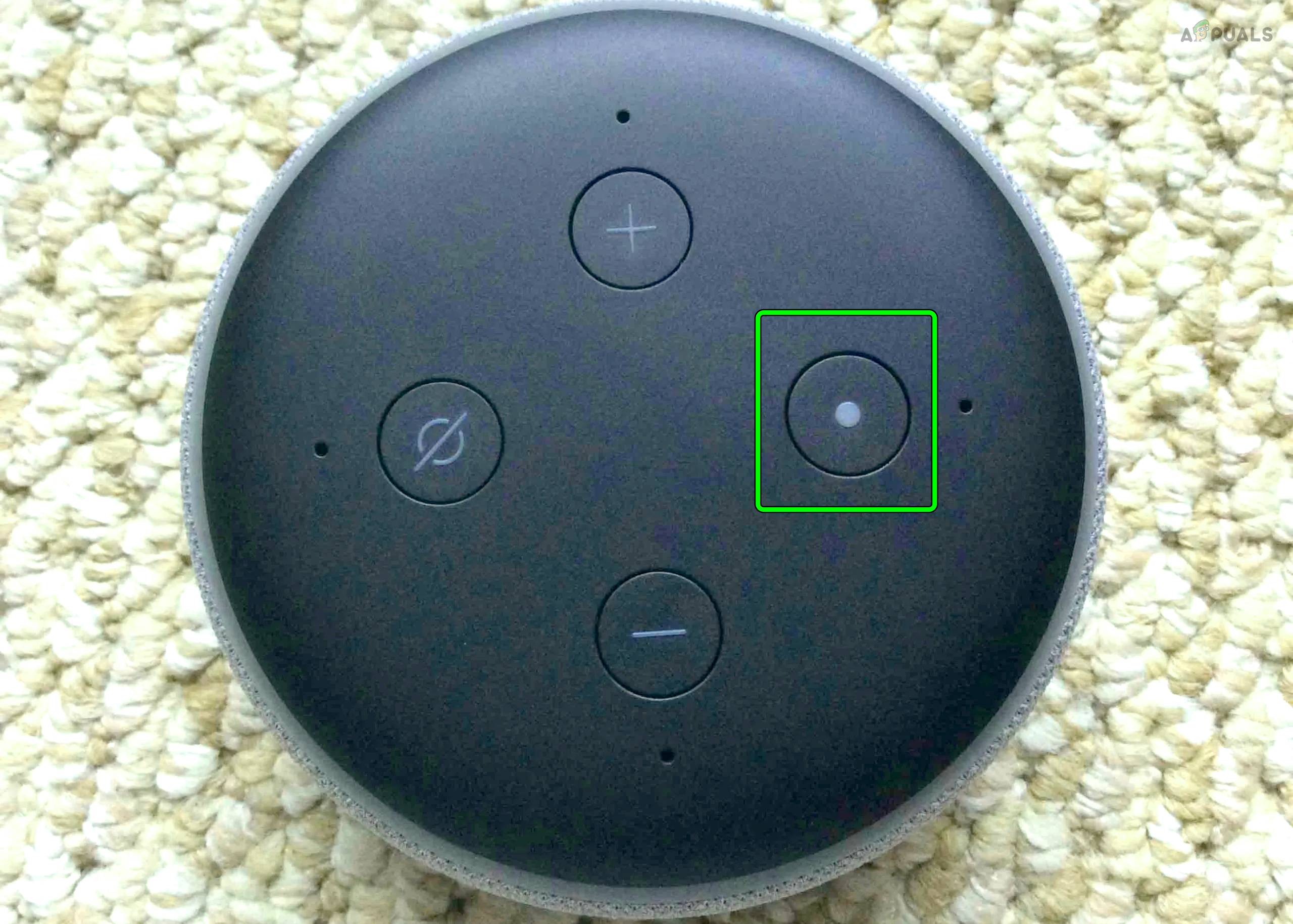
Restart the Amazon Echo Device - If that fails, restart the hub, switch, or router and check if that resolves the issue.
- If the issue persists, power off the related devices (such as Alexa, phone, router, etc.).
- Unplug the power cable of these devices and wait for a minute before plugging everything back in.
4. Update the Firmware of the Alexa Device to the Latest Release
If your Alexa device has old firmware, it may not work well with other devices or modules. This means it might be ignoring your commands just because it is not compatible. Also, if there’s a glitch in the device’s firmware, this could cause more problems.
You can fix these issues by updating the device’s firmware. This update will make sure your Alexa device works better with other devices and also gets rid of any firmware bugs.
To update an Amazon Echo Show or Echo Spot:
- Navigate to Settings > Device Options.
- Select Check for Software Updates and wait till the process completes.
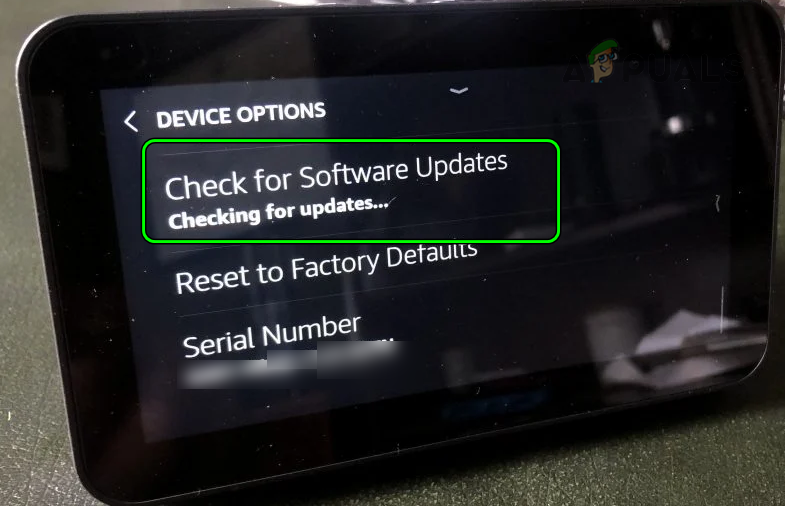
Check for Software Updates of the Amazon Echo - Once done, restart the Echo device and check if Alexa is responding correctly.
- If not, update the related apps such as the Alexa app, manufacturer apps, etc. Check if that solves the problem.
If that fails, try updating firmware of hubs, individual devices such as smart bulbs etc.
5. Router-Related Solutions
The router is an essential part of communication between devices on a local network, and if it is not in the state required by Alexa, it can cause issues. Let’s discuss these in detail:
Use Another Band on the Router
The Alexa app uses the local network to access a device. If your phone is on a different Wi-Fi band (such as 5 GHz) and the problematic device is on another band (such as 2.4 GHz), then the app will not be able to locate the device on the local network, and thus, the device will not respond.
In such a case, using another band of the router will solve the problem. To do this on a Virgin Media router:
- Access the router’s web portal in a web browser and log in.
- Navigate to Settings > Wireless.
- Disable 5 GHz and enable 2.4 GHz.
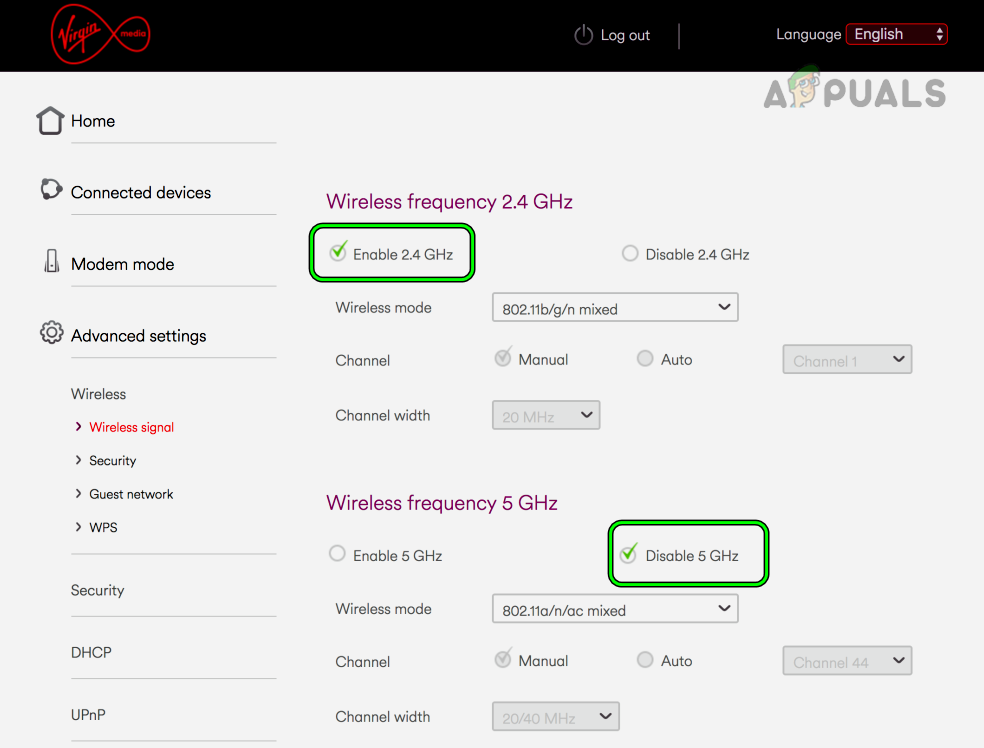
Enable 2.4GHz Band on the Router and Disable 5GHz Band - Apply the changes and connect all the devices to the 2.4 GHz band. Verify if Alexa is responding correctly.
- If not, disable 2.4 GHz and enable 5 GHz.
- Connect all the devices to the 5GHz band and check if Alexa is responding.
- If that fails, see if using a different Wi-Fi channel on the router solves the problem.
Change the DNS Settings of the Network
The Alexa app or device will fail to respond properly if the network’s DNS settings are not optimized, or if a DNS blocking or filtering mechanism prevents the app from reaching its servers. In such a case, editing the DNS settings of your network will resolve the issue.
The exact instructions depend on your particular configuration, but for better illustration, we will go through the process of changing the DNS settings of a router.
- Go to the admin page of the router through a browser and log in.
- Navigate to Setup > Basic Setup.
- In the DNS1 field, enter the following values:
8.8.8.8
- In the DNS2 field, enter the following values:
8.8.4.4
- Save the changes and restart the router along with connected devices. Verify if the Alexa is working properly.
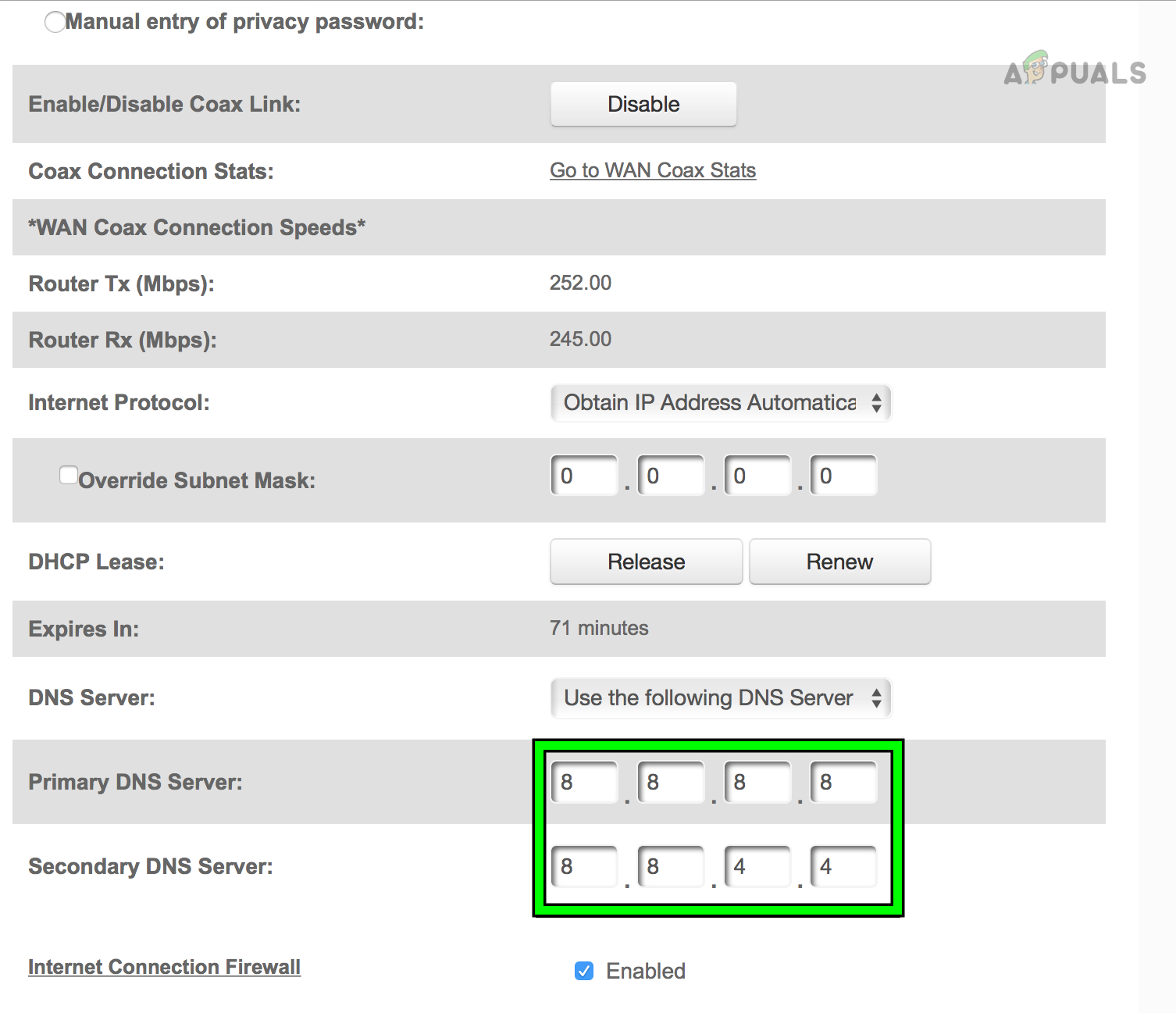
Change to the Google DNS in the Router Settings - If not and you have any type of blocker (like DNS Blocker), check if whitelisting *.a2z.com resolves the issue.
Reset the Router to the Factory Defaults
The Alexa app or device will stop responding if your router’s firmware has gone invalid or is no more compatible with Alexa or connected devices. Due to this, the router will fail to transfer traffic between Alexa and other devices.
In such a situation, resetting the router to the factory defaults will resolve the issue. Before proceeding, make sure to note down the configurations that may be required later to set up the router.
- Locate, press, and hold the reset button of the router. You may need to use a pointy object (like a paperclip) to press and hold the reset button.
- Wait for 30 seconds or until the router restarts.
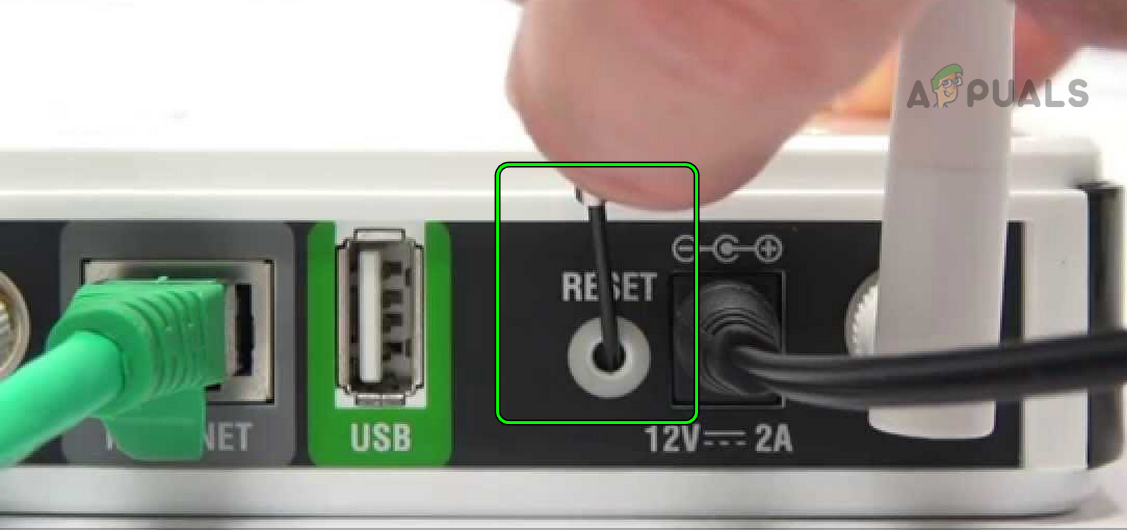
Press the Reset Button on the Router - Release the button and wait till the router is properly powered on.
- Set up the router as per the OEM requirements and afterward, check if Alexa is responding.
- If that fails, check if using another router (from a friend/family) makes the Alexa work. If so, then the router’s incompatibility is causing the issue and you need a new router to make Alexa work in your setup.
Try Another Network
If your network is no longer compatible with the requirements of the Alexa device or Amazon servers, you will experience the issue at hand. You can check if this is the case by trying a different network.
- Disconnect your devices from the current network and connect to another network. If no other network is possible, you may set up a hotspot on another phone and connect the devices to that network.
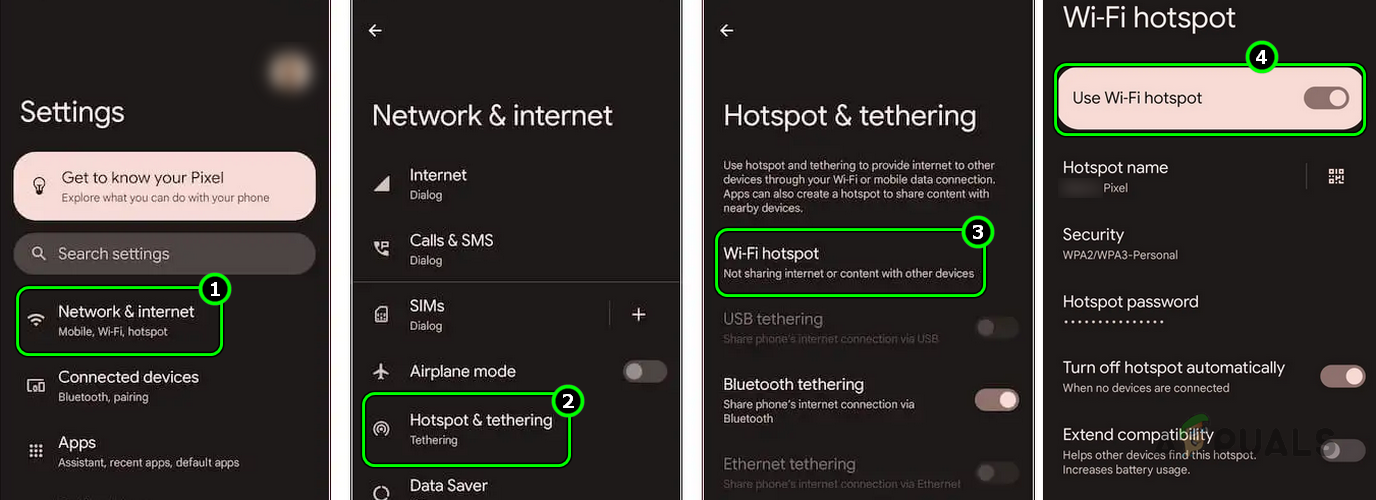
Change to the Google DNS in the Router Settings - Check if the problem is solved. If so, then you may contact the ISP to resolve the issue.
6. Solutions Involving Alexa App
This Alexa issue can track back to problems within the Alexa app and not be caused by other devices. Let’s cover these in detail as under:
Clear the Cache of Alexa and Others Applications
Some applications like Alexa, Harmony, etc. will not be able to communicate with your device if some of the data in your device cache is not valid anymore. To fix this, force quit these applications and clear their cache.
To force quit Alexa/Harmony apps and clear their caches on an Android phone:
- Navigate to Settings > App Management > Amazon Alexa.
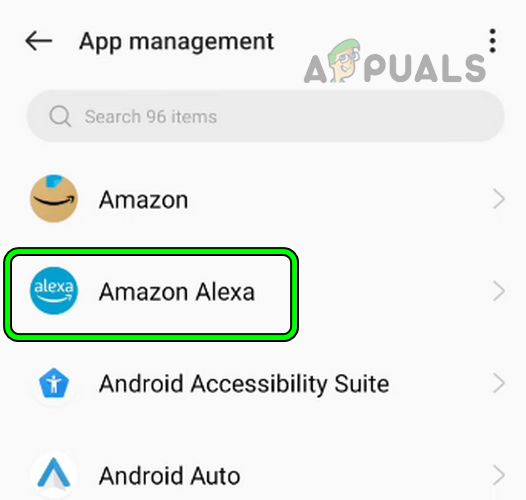
Open Amazon Alexa in the Android Apps - Force Stop the app and open Storage.
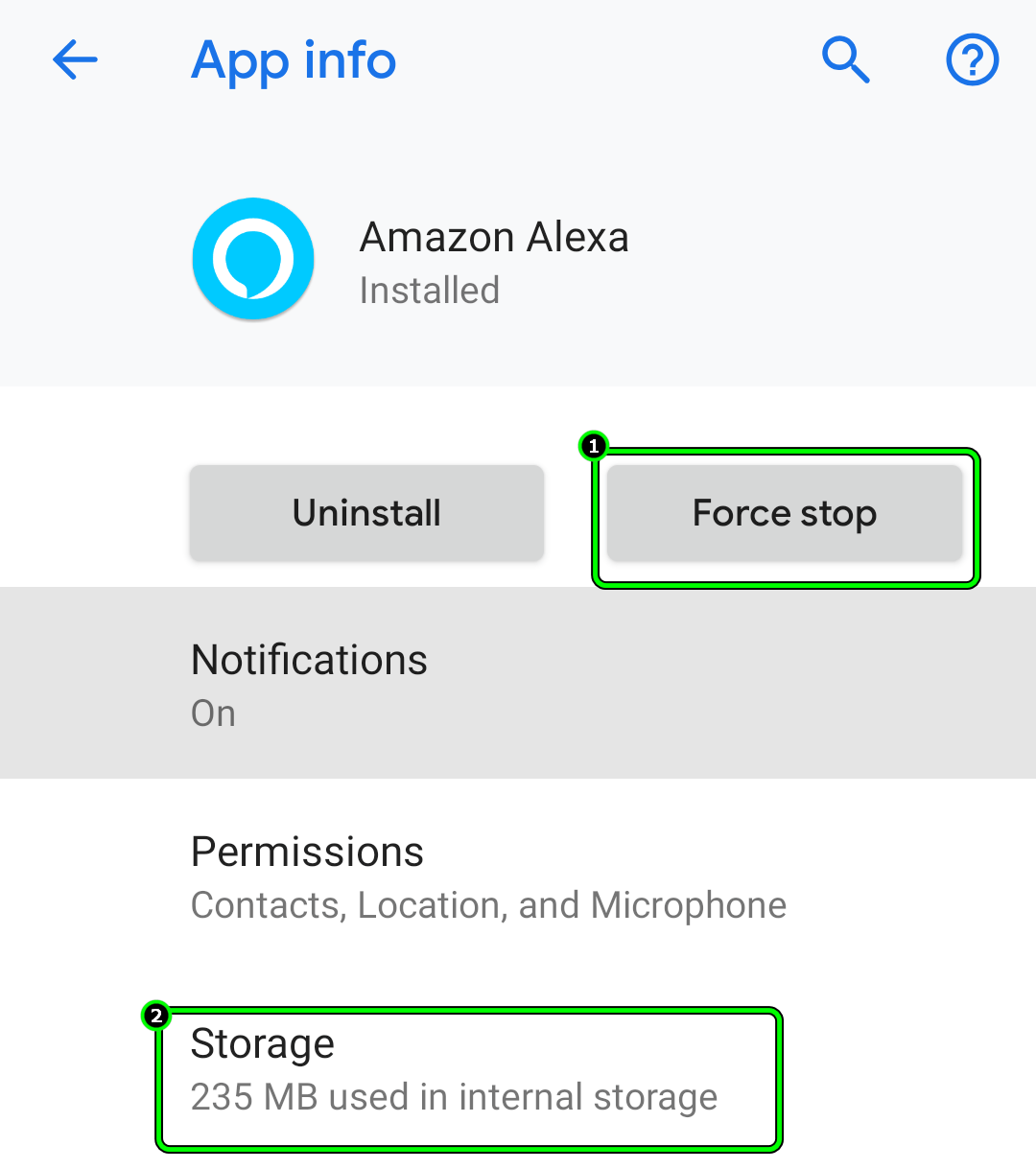
Force Stop the Amazon App and Open its Storage Settings - Clear the Cache of the Alexa app and repeat the same to the manufacturer app (e.g., the Harmony app).
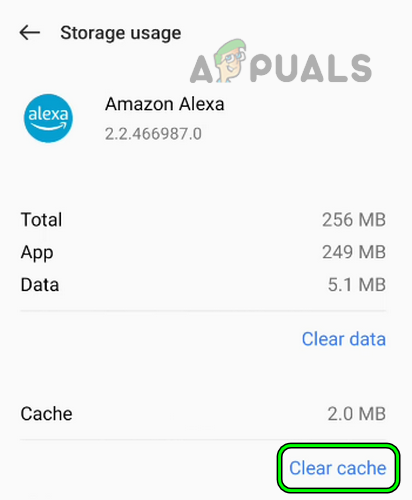
Clear Cache of the Amazon Alexa App - Restart the phone and check if Alexa is working properly.
- If not, check if the Alexa app works fine whereas voice commands are failing to execute.
- If the issue persists, check if the problematic device works fine through the manufacturer app (e.g., the Jinvoo app).
- If that also does not work, disable and enable voice commands in the Alexa app and check if that solves the problem.
Re-enable the Problematic Device in the Alexa Settings
If the Alexa app cannot send commands to a specific device, it could be due to a problem with the device’s profile in the app. This can be cleared by refreshing the device through re-enabling it.
- Launch the Alexa app and navigate to Devices > problematic device.
In some cases, you may need to head to the All Devices section to open the problematic device. - Disable the device and restart your phone.
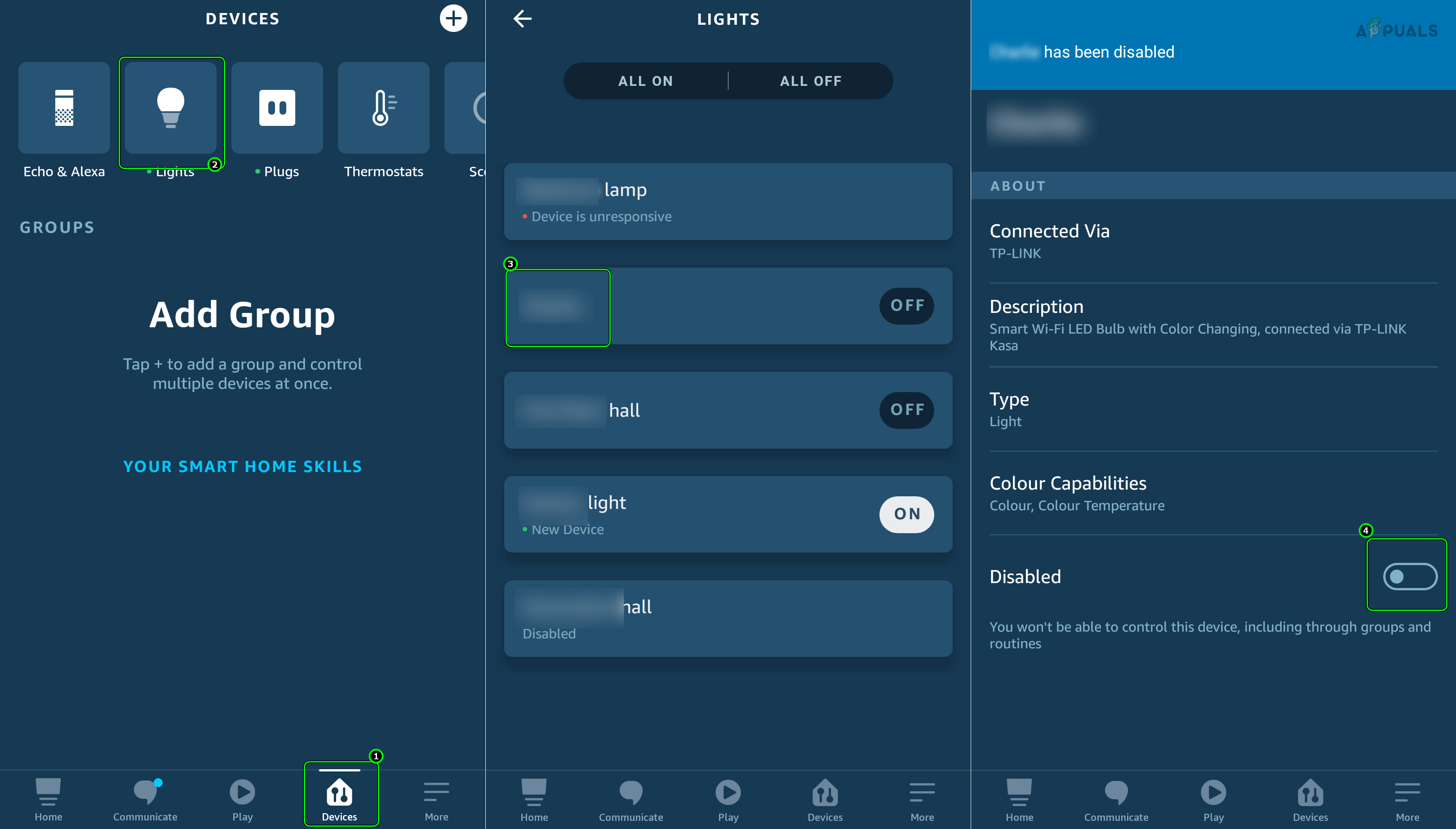
Disable the Device in the Alexa App - Enable the device in the Alexa settings to see if Alexa has started responding.
Disable and Enable the Skill in the Alexa App
Skills in the Alexa app are like mini-apps that allow you to control third-party devices and perform other functions. If there is an issue with the skill profile that controls the problematic device, the device will stop responding and Alexa will fail to execute your command on that device.
To fix this, you can disable and re-enable the skill in the Alexa app.
- Launch the Alexa app.
- Navigate to Menu > Skills & Games > Your Skills > the required skill.
- Disable the skill and restart the phone.
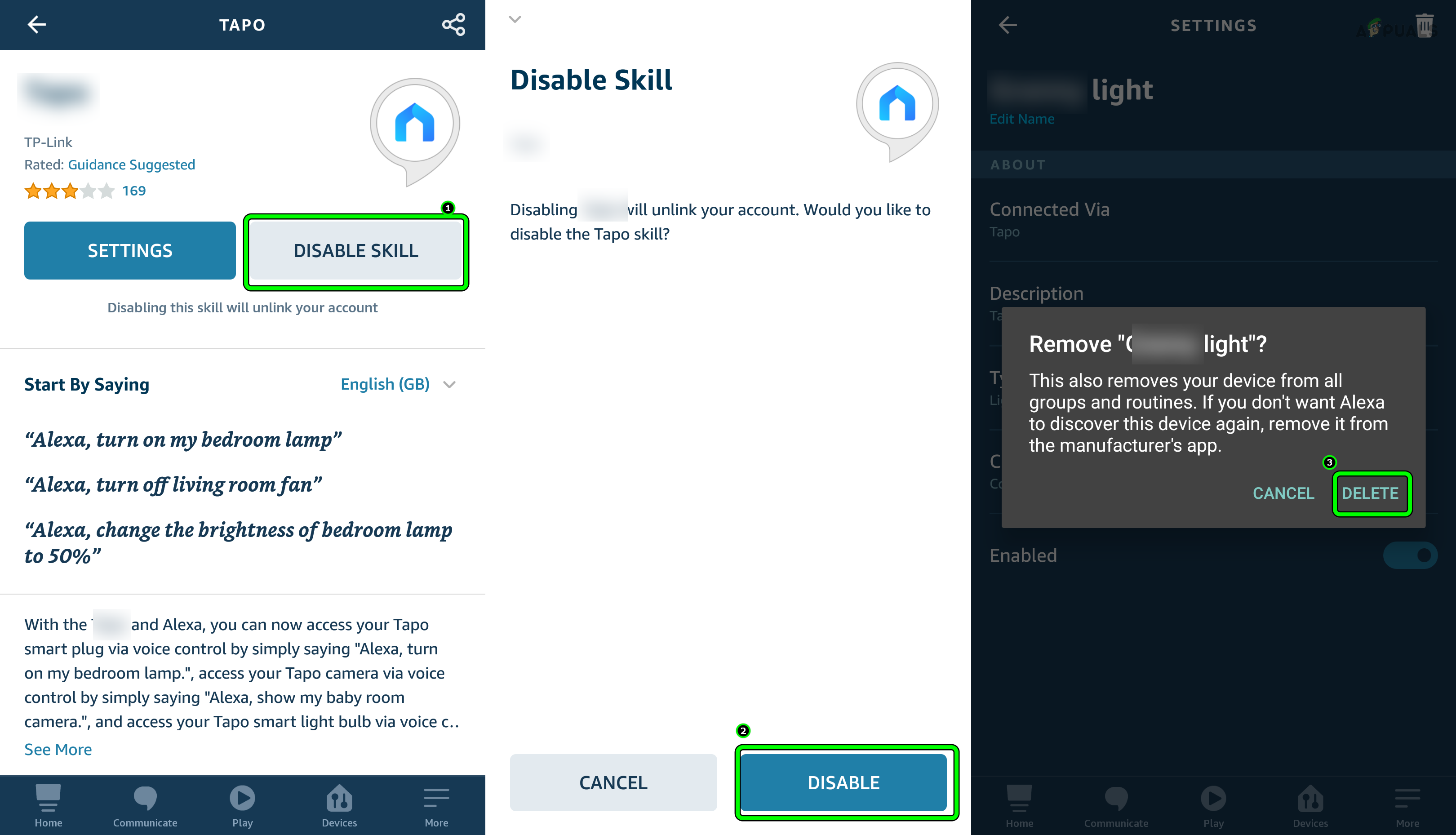
Disable the Skill in the Alexa App - Launch the Alexa app and enable the skill. For some skills, you may need to relink or reauthorize.
- Once done, verify if Alexa is responding to your commands.
- If not, disable/enable each skill in Alexa and check if that clears the problem.
- If the issue persists, change the wake word of Alexa.
Rename the Problematic Device in the Alexa App Settings
If there is a name conflict between the problematic device and another device (currently present or added previously to the app), you will not be able to get a response from Alexa as it will be trying to direct commands to the device that is not present. You can resolve this issue by renaming the problematic device in the Alexa app.
- Launch the Alexa app and go to Menu > Smart Home > problematic device (such as Fan).
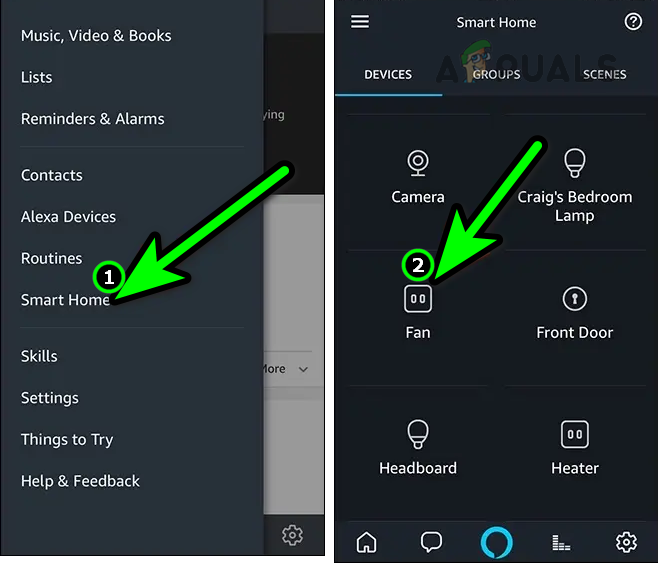
Open Smart Home in the Alexa App and Tap on the Required Device Type - Tap on the three vertical ellipses in the top right and select Edit Name.
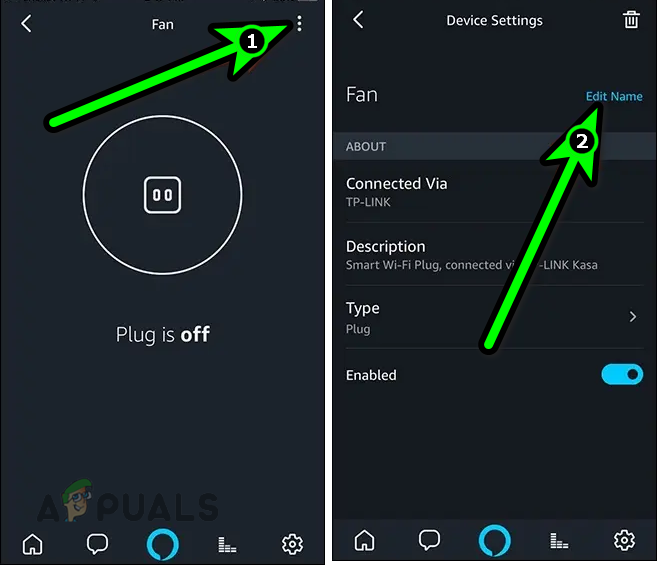
Open the More Menu and Select Edit Name for the Device in the Alexa App - Tap on the X button to remove the current name and enter the new name.

Enter a New Name for the Problematic Device in the Alexa App - Tap on Done and check if the Alexa is responding properly.
- If that fails, rename the device in the manufacturer’s app (like the KASA app) and check if Alexa recognizes the device. See if Alexa is responding to commands for that particular device.
Enable Response Immediately without Waiting for the Device
If the Alexa app is waiting for a response from a device before it can respond to your request, it can create the impression that the app itself is not responding. In this situation, enabling the app’s option to “Response Immediately Without Waiting for Device” will resolve the issue.
- Launch the Alexa app and go to the problematic skill.
- Open the Skill Settings and disable Response Immediately Without Waiting for Device.

Enable Response Immediately Without Waiting for Device in Alexa - Once done, check if Alexa is responding.
Remove Bluetooth Devices from the Alexa App
If the Alexa app is defaulting its audio output to a Bluetooth device that is not currently available, then that could make you think that Alexa is not responding as you will not be able to hear the output. Here, removing the Bluetooth devices from Alexa will solve the problem.
- Launch the Alexa app and go to Devices > Echo & Alexa > Your Devices > Bluetooth Devices.
- Select the device that you want to remove and tap on Forget Device.
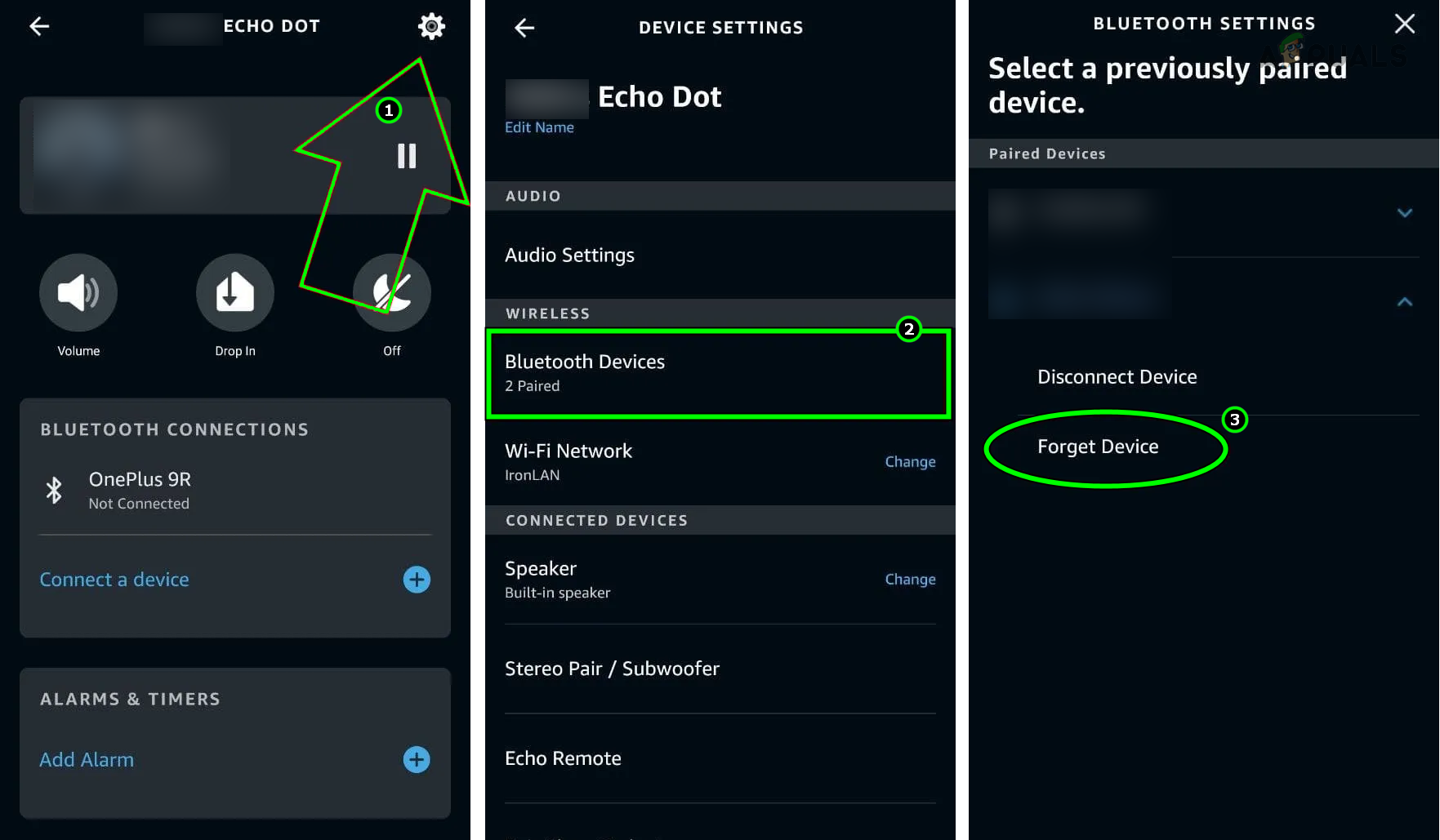
Forget the Device in the Alexa App’s Bluetooth Settings - Repeat for all the devices that you want to remove and check if Alexa is responding normally.
- If not, set the default output device in Alexa’s app settings to a speaker (not a TV or any such device) and check if the problem is cleared.
Reinstall the Alexa App
Alexa will stop responding if the latest update to the Alexa or manufacturer app (such as the Harmony app) has failed to apply properly and has invalidated the current installation modules. As a result, these modules will fail to properly communicate with each other and thus cause the issue.
In this case, reinstalling the Alexa app and the manufacturer app will solve the problem. To do this on an Android phone:
- Disable the problematic skill in Alexa (if applicable).
- Navigate to phone Settings > Application Manager > Alexa.
- Force Stop the Alexa app and open Storage.
- Clear the Cache and Data. This will remove any old references in the OS.
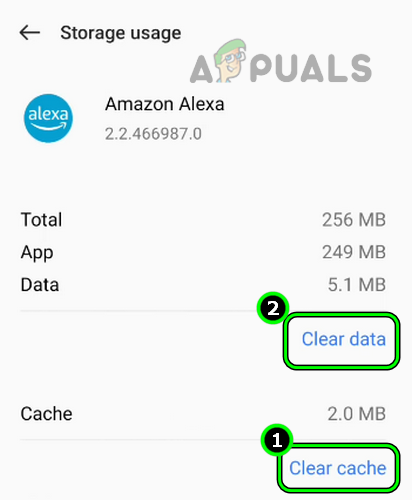
Clear Cache and Data of the Alexa App - Hit the Back button and Uninstall the Alexa app.
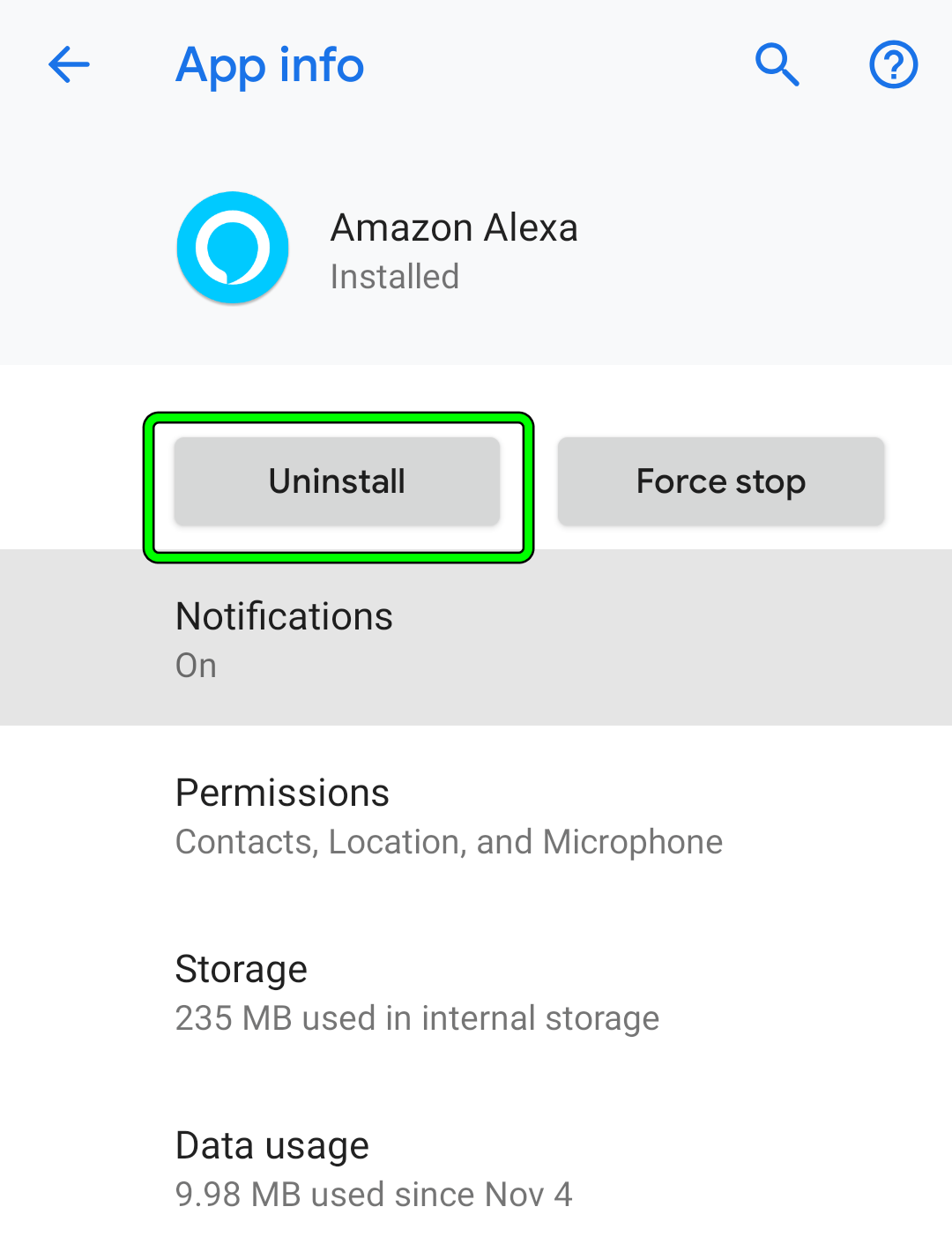
Uninstall the Alexa App - Once done, repeat the same steps to uninstall the manufacturer app (e.g., Harmony).
- Restart the phone and reinstall the manufacturer app.
- Launch the app and configure it as per your requirements.
- Install the Alexa app and launch it.
- Log in using your credentials and enable the required skill. In some cases, you may need to reauthorize or relink the skill.
- Once done, verify if Alexa is working now.
Re-add the Problematic Device/Skill to Alexa
If the data stored in your account on Amazon servers about the device or skill is no more valid, the fetched data by the app will also be not valid and as a result, the app will not be able to send commands to the problematic device. This can be fixed by removing the skill/device from the app and then re-adding these.
- If applicable, disable the problematic skill in Alexa.
- Launch the Alexa app and go to Devices > problematic device. If the device is not shown, open All Devices and select the required device.
- Open Settings and tap on the Trash Icon. In the case of an Echo product, you may need to tap on Deregister on the device’s Settings page.
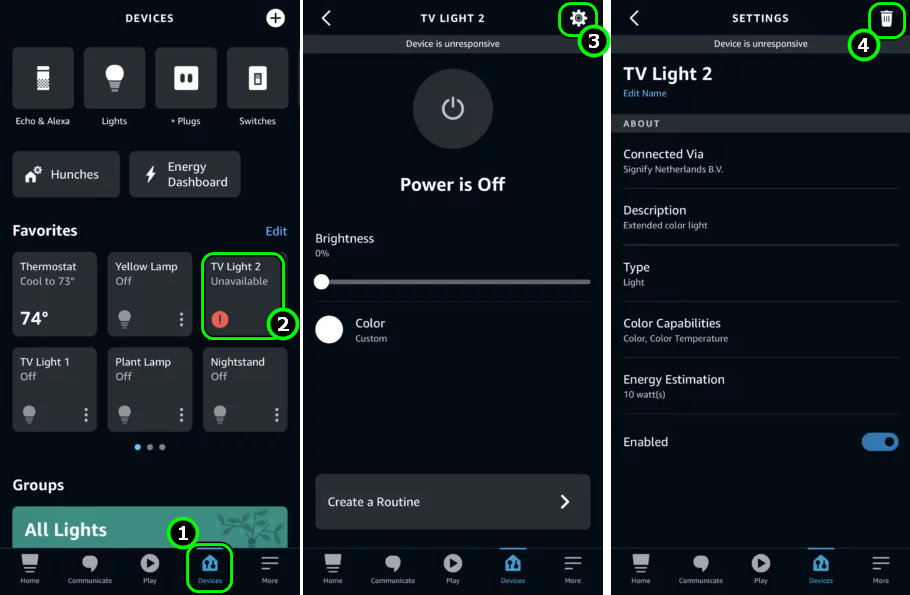
Delete Device in the Alexa App - Once done, restart the phone and add back the device/skill to Alexa. Check if the problem is solved.
- If not, navigate to the Alexa section of the Amazon website in a web browser. In the case of a mobile browser, you may need to use Request the Desktop Version of the site.
7. Reset the Problematic Device or Hub to the Factory Defaults
A device or hub with invalid firmware components will not be compatible with the Alexa app or device. It will fail in implementing the communication protocols properly and thus cause the issue. Resetting the problematic device or hub will fix this problem.
To reset a Harmony Hub :
- Remove devices attached to the Harmony hub from Alexa and disable or remove the related skills in Alexa.
- Remove the hub and related devices from the Harmony mobile app.
- Unplug the Harmony hub from the power source.
- Press and hold the Pair/Reset button on the back of the hub and while keeping the button pressed, plug back the hub’s power cable into the power source.
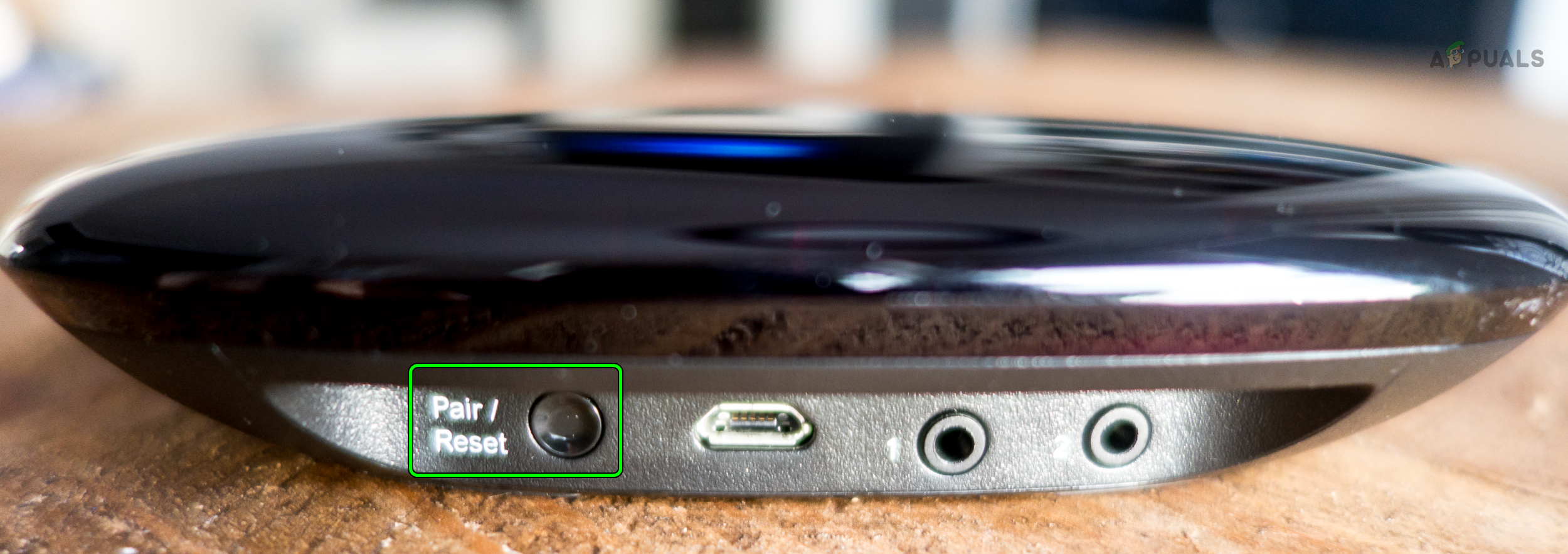
Reset the Harmony Hub to the Factory Defaults - Keep on holding the Pair/Reset button for another 5 seconds.
- Then the hub’s light will flicker for 30 seconds and the hub will be restored back to its defaults.
- Configure the hub as per your requirements through the Harmony mobile app and afterward, add back or enable the skill in Alexa.
- Discover devices in Alexa and check if it is responding.
8. Reset the Alexa Device to the Factory Defaults
If the firmware of your Alexa device goes invalid after a failed update attempt, the device will not respond. To fix this, reset the problematic device to the factory defaults.
To reset the Amazon Echo or Echo Dot (3rd/4th Generation):
- Press and hold the Action button on the Amazon Echo for 20 seconds. The light ring of the Echo device will turn off.
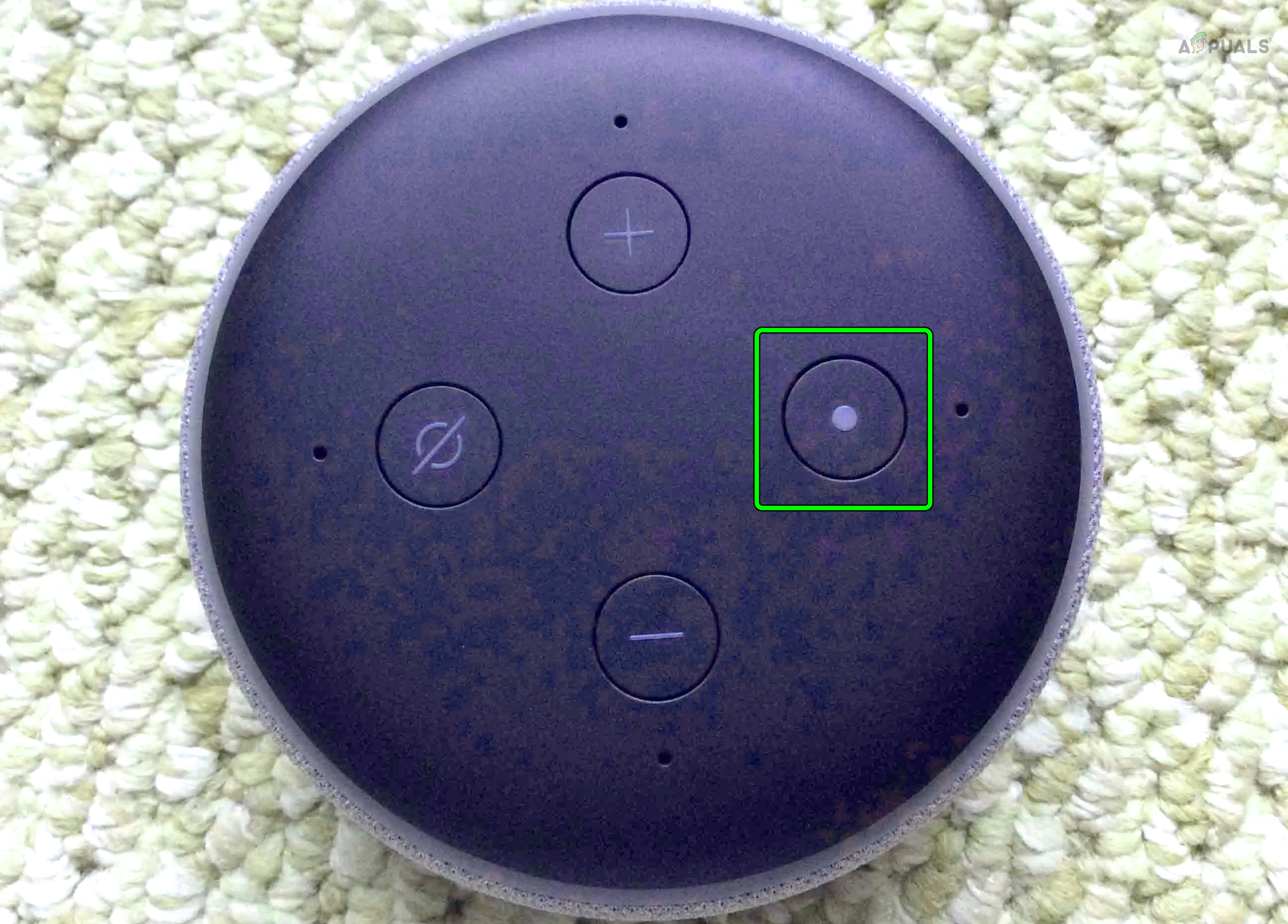
Reset the Echo Dot 3rd Generation to the Factory Defaults - Wait till the light ring of the Echo device is turned on again and then configure the device as per your setup. Verify if that solves the problem.
If that fails, contact Amazon or hub support, and if any of the devices are faulty and under warranty, you may claim a replacement.
 Reviewed by
Reviewed by 
